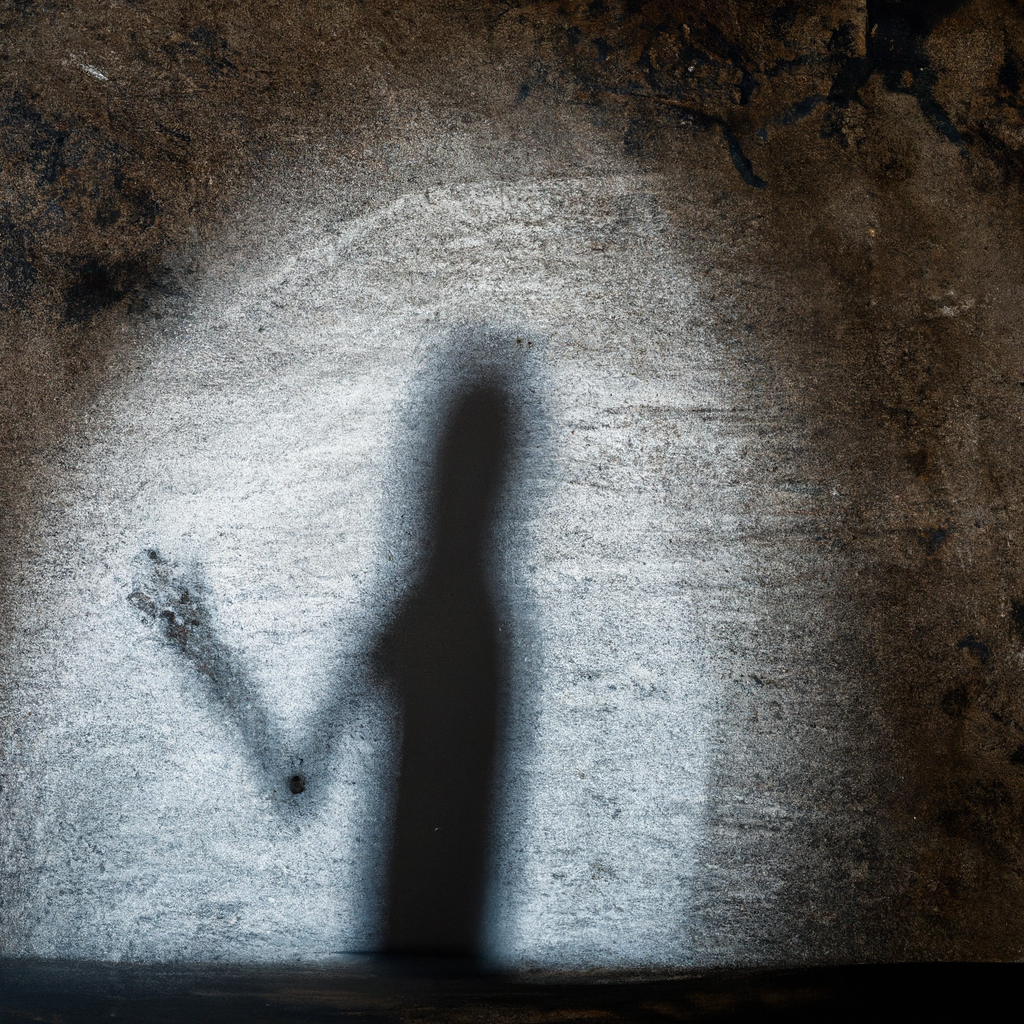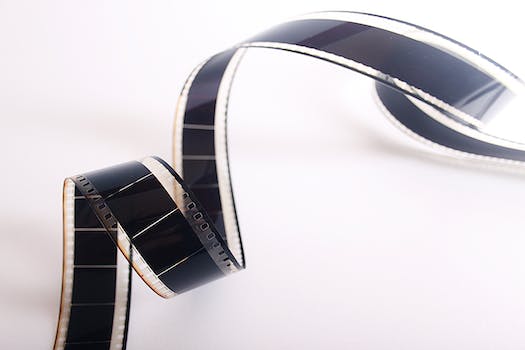Horror movies have long been a favorite genre among audiences, captivating and terrifying viewers in equal measure. From spine-chilling jump scares to psychological thrillers, these films have a unique ability to evoke intense emotions and leave a lasting impact on the audience. But what is it about horror movies that make them so powerful? This article explores the reasons behind the profound effect horror movies have on audiences, delving into the psychological, physiological, and cultural factors that contribute to this captivating genre’s enduring popularity.
- 1. The Thrill of Horror Movies
- 1.1. 1. The Adrenaline Rush
- 1.2. 2. The Psychological Experience
- 1.3. 3. The Suspenseful Plot
- 1.4. 4. The Unique Visual Effects
- 1.5. 5. The Memorable Characters
- 2. Horror Movies as a Form of Entertainment
- 2.1. 1. Escaping Reality
- 2.2. 2. Shared Experiences
- 2.3. 3. Catharsis and Release
- 2.4. 4. Cult Following
- 2.5. 5. Exploring Taboos
- 3. The Evolution of Horror Movies
1. The Thrill of Horror Movies
Horror movies have always had a unique ability to captivate and terrify audiences. There is something about the thrill of being scared that keeps people coming back for more. Whether it’s the adrenaline rush, the suspenseful plotlines, or the psychological aspects, horror movies have a powerful effect on viewers.
One of the main reasons why horror movies are so popular is the adrenaline rush they provide. When watching a horror film, our bodies go into a fight-or-flight response. As the tension builds and the suspense increases, our heart rate quickens, our palms get sweaty, and our breathing becomes shallow. It’s a physiological response that is both thrilling and exhilarating.
Another reason why horror movies have such a powerful effect is the suspenseful plotlines. The anticipation of what’s going to happen next keeps viewers on the edge of their seats. Whether it’s a masked serial killer stalking his victims or a supernatural entity haunting a family, the unknown creates a sense of unease and excitement.
Furthermore, horror movies tap into our deepest fears and anxieties. They explore the darker side of human nature and confront us with our own mortality. By confronting our fears in a controlled environment, we are able to experience a cathartic release. It’s a way for us to face our fears without actually being in danger.
In conclusion, the thrill of horror movies comes from the adrenaline rush, the suspenseful plotlines, and the exploration of our deepest fears. It’s a genre that has the power to both captivate and terrify audiences, making it a popular choice for many moviegoers.
1.1. 1. The Adrenaline Rush
Horror movies have a unique ability to evoke an adrenaline rush in audiences. The thrill of watching these films stems from the intense and suspenseful nature of the storytelling. As viewers, we are drawn into a world of fear and uncertainty, eagerly anticipating what will happen next. The combination of suspenseful music, unexpected jump scares, and shocking visuals creates a heightened sense of tension that can send shivers down our spines.
The adrenaline rush experienced while watching horror movies is a result of our body’s natural fight-or-flight response. When we are exposed to frightening stimuli on screen, our brain releases adrenaline, a hormone that prepares us for potential danger. This physiological reaction triggers an increased heart rate, heightened senses, and a surge of energy. We become fully engrossed in the film, feeling a mix of fear, excitement, and anticipation.
Furthermore, horror movies provide a safe and controlled environment for us to experience fear. While real-life situations may pose genuine threats, horror movies offer a form of escapism where we can explore our darkest fears without actual harm. The thrill of being scared in a controlled setting can be exhilarating, as it allows us to confront our fears in a secure way.
The powerful effect of horror movies on audiences is also attributed to the psychological aspect. These films tap into our deepest fears and anxieties, allowing us to confront and process them on a subconscious level. By exploring themes such as death, the supernatural, or psychological torment, horror movies provide an outlet for our own internal fears and allow us to make sense of the unknown.
In conclusion, the adrenaline rush and thrill provided by horror movies make them a unique and captivating genre. Whether it’s the suspenseful storytelling, the physiological response triggered by fear, or the psychological exploration of our deepest fears, horror movies have a powerful effect on audiences that keeps us coming back for more.
1.2. 2. The Psychological Experience
The Thrill of Horror Movies section content goes here.
1.3. 3. The Suspenseful Plot
The Suspenseful Plot
One of the key elements that make horror movies so captivating is the suspenseful plot. These movies often have a well-crafted storyline that keeps the audience on the edge of their seats. From the beginning, there is a sense of anticipation and tension that builds up throughout the film. The plot is carefully designed to incorporate unexpected twists and turns, making it difficult for the viewers to predict what will happen next. This element of surprise creates a thrilling experience and keeps the audience engaged from start to finish.
In horror movies, the suspense is often heightened by the use of various techniques such as eerie music, dim lighting, and clever camera angles. These techniques work together to create an atmosphere of fear and uncertainty. The audience becomes invested in the story, constantly wondering what will happen to the characters and how they will escape the terrifying situations they find themselves in.
Moreover, horror movies often play with the audience’s emotions by introducing elements of mystery and suspense. They keep the viewers guessing about the true nature of the threat or the identity of the villain. This constant state of uncertainty further adds to the suspense and thrill of the movie.
Overall, the suspenseful plot of horror movies is a major factor in why they have such a powerful effect on audiences. It keeps them engaged, on the edge of their seats, and constantly craving for more surprises and scares.
1.4. 4. The Unique Visual Effects
The Unique Visual Effects
One of the key elements that contribute to the powerful effect of horror movies on audiences is their unique visual effects. Horror films often employ a wide range of techniques to create a sense of fear, suspense, and terror. These visual effects are carefully crafted to enhance the overall viewing experience and leave a lasting impression on the audience.
One of the most commonly used visual effects in horror movies is the manipulation of lighting and shadows. By playing with light and darkness, filmmakers can create a haunting atmosphere and build tension. The strategic use of dim lighting, flickering lights, and shadows lurking in the background can evoke an eerie and unsettling feeling in viewers.
Another visual effect commonly seen in horror movies is the use of special makeup and prosthetics to create terrifying creatures and monsters. From grotesque zombies to menacing vampires, the skillful application of makeup and prosthetics can bring these fictional beings to life and make them appear horrifyingly real.
Additionally, horror movies often make use of clever camera angles and perspectives to heighten the sense of fear and unease. Through techniques such as extreme close-ups, low-angle shots, and shaky handheld shots, filmmakers can make the audience feel as if they are in the midst of the terrifying events unfolding on screen.
Furthermore, visual effects such as blood splatters, gore, and gruesome special effects play a significant role in horror movies. These elements shock and disgust audiences, eliciting visceral reactions and intensifying the overall impact of the film.
In conclusion, the unique visual effects employed in horror movies contribute greatly to their powerful effect on audiences. Through the manipulation of lighting, the creation of terrifying creatures, clever camera techniques, and the use of graphic visuals, horror films immerse viewers in a world of fear and leave a lasting impression.
1.5. 5. The Memorable Characters
One of the key elements that make horror movies so captivating is the presence of memorable characters. These characters play a crucial role in intensifying the overall thrill and terror experienced by the audience. Whether it’s a deranged serial killer, a supernatural entity, or a group of unsuspecting victims, these characters leave a lasting impression on viewers.
Memorable characters in horror movies often possess unique traits or backstories that make them stand out. They may have complex motivations, dark pasts, or even possess supernatural abilities themselves. These characteristics help to create a sense of intrigue and anticipation, as audiences are curious to uncover the true nature of these individuals.
Additionally, horror movie characters are often relatable in some way. They represent the vulnerable aspects of human nature, such as fear, curiosity, or survival instincts. As audiences watch these characters navigate through terrifying situations, they can’t help but project themselves into their shoes, experiencing a rollercoaster of emotions along with them.
Moreover, the portrayal of memorable characters in horror movies is often supported by exceptional acting performances. Talented actors bring these characters to life, effectively conveying their emotions, fears, and vulnerabilities. Such performances leave a lasting impact on the audience and contribute to the overall success of the film.
In conclusion, the presence of memorable characters is a crucial factor that contributes to the powerful effect horror movies have on audiences. These characters add depth, intrigue, and relatability to the storyline, making the viewing experience all the more thrilling and unforgettable.
2. Horror Movies as a Form of Entertainment
Horror movies have long been a popular form of entertainment for audiences around the world. These films are designed to elicit feelings of fear, suspense, and excitement, providing a thrilling experience for viewers. From classic horror films like Psycho and The Exorcist to more contemporary releases like The Conjuring and Hereditary, horror movies continue to captivate audiences of all ages.
One of the reasons why horror movies have such a powerful effect on audiences is their ability to tap into our primal fears. These films often explore themes such as death, the supernatural, and the unknown, which can evoke deep-seated anxieties within us. By confronting and experiencing these fears in a controlled environment, viewers can feel a sense of catharsis and relief.
Additionally, horror movies often rely on suspense and tension to keep audiences engaged. The use of dark lighting, eerie soundtracks, and jump scares can create a sense of unease and anticipation, heightening the overall viewing experience. Through expert storytelling and effective cinematography, horror filmmakers are able to create an immersive world that draws viewers in.
Furthermore, horror movies can serve as a form of escapism for audiences. In a world filled with stress and uncertainty, watching a horror film can provide a temporary escape from reality. By immersing themselves in a fictional world of terror, audiences can momentarily forget about their own troubles and focus on the thrilling narrative unfolding on screen.
It is also worth noting that horror movies often provide a shared experience for viewers. Whether it’s gathering with friends for a movie night or discussing the latest horror flick online, these films have a way of bringing people together. The adrenaline-inducing moments and the discussions that follow create a sense of community and connection among fans.
In conclusion, horror movies have a powerful effect on audiences due to their ability to tap into our deepest fears, create suspense and tension, offer a form of escapism, and foster a sense of community. Whether you love them or hate them, there’s no denying the impact that horror movies have had on the world of entertainment.
2.1. 1. Escaping Reality
Horror movies have long been a popular form of entertainment, captivating audiences with their ability to provide an escape from reality. These films transport viewers into a world of suspense, fear, and adrenaline, allowing them to momentarily forget about their own troubles and immerse themselves in the chilling narratives. The allure of horror movies lies in their ability to evoke intense emotions and provoke a powerful psychological response.
For many individuals, watching horror movies offers a thrilling and cathartic experience. It provides an outlet for releasing pent-up emotions and adrenaline in a safe and controlled environment. The adrenaline rush and heightened sense of fear experienced while watching these films can be exhilarating for some, creating a sense of excitement and anticipation.
Furthermore, horror movies often explore dark and taboo themes that are not commonly addressed in other genres. They delve into the deepest fears and anxieties of the human psyche, confronting viewers with their own mortality and the fragility of life. This confrontation can be both terrifying and liberating, as it allows individuals to confront their fears in a controlled setting.
In addition to the psychological aspects, horror movies also offer a sense of escapism. They transport viewers to a different reality, where the rules of the everyday world no longer apply. This temporary escape from reality can be a welcome break for many, providing a much-needed distraction from the stresses and monotony of daily life.
Overall, horror movies have a powerful effect on audiences due to their ability to transport viewers into a thrilling and suspenseful world, evoke intense emotions, and provide a temporary escape from reality. Whether it’s the adrenaline rush, the exploration of taboo themes, or the sense of escapism, horror movies continue to captivate and enthrall audiences worldwide.
2.3. 3. Catharsis and Release
Catharsis and Release: Horror movies provide a unique opportunity for audiences to experience catharsis and release. Through the suspenseful and terrifying scenes, viewers are able to release their own fears and anxieties in a controlled environment. The adrenaline rush and the feeling of being scared stimulates the body’s fight-or-flight response, triggering a release of adrenaline and endorphins. This release can be both exhilarating and cathartic, allowing individuals to temporarily escape from their own real-life fears and anxieties. Additionally, horror movies often explore dark themes and taboo subjects, providing a safe space for audiences to confront and process their own emotions and fears. By confronting the terrifying aspects of the human experience through fiction, viewers are able to gain a sense of control and empowerment over their own fears, leading to a cathartic experience.
2.4. 4. Cult Following
Horror movies have garnered a cult following over the years, captivating audiences with their ability to elicit intense emotions and provide a unique form of entertainment. This dedicated fan base, often referred to as horror enthusiasts, embraces the genre’s elements of fear, suspense, and the supernatural. The appeal of horror movies lies in their ability to tap into our primal fears and push the boundaries of our imagination. Whether it’s the thrill of being scared or the adrenaline rush that comes from witnessing terrifying events unfold on screen, horror movies have a powerful effect on audiences.
2.5. 5. Exploring Taboos
Horror movies have long been a popular form of entertainment, captivating audiences with their ability to evoke powerful emotions. These films explore taboos that are often considered off-limits in other genres, pushing boundaries and testing the limits of what is acceptable for public consumption. By delving into forbidden topics and confronting societal fears, horror movies provide a cathartic experience for viewers.
One of the reasons horror movies have such a powerful effect on audiences is their ability to tap into our deepest fears and anxieties. Whether it’s the fear of the unknown, the fear of death, or the fear of supernatural entities, horror movies allow us to confront these fears in a controlled environment. This can be a thrilling and adrenaline-inducing experience, as we are able to experience the intense emotions associated with fear without actually being in any real danger.
Furthermore, horror movies often challenge societal norms and push the boundaries of what is considered acceptable. They explore controversial topics such as violence, sexuality, and the supernatural, which are often seen as taboo in other forms of entertainment. By confronting these taboos head-on, horror movies force us to confront our own beliefs and values, sparking debates and discussions about morality and the nature of evil.
Another aspect that makes horror movies so compelling is their ability to create a sense of suspense and tension. Through the use of atmospheric settings, ominous music, and clever cinematography, horror films keep audiences on the edge of their seats, eagerly anticipating what will happen next. This heightened sense of anticipation and suspense adds to the overall thrill and enjoyment of watching a horror movie.
In conclusion, horror movies have a powerful effect on audiences due to their exploration of taboos, their ability to tap into our deepest fears, their challenge to societal norms, and their creation of suspense and tension. These films provide a unique form of entertainment that allows us to confront our fears, question our beliefs, and experience intense emotions in a controlled environment.
3. The Evolution of Horror Movies
Horror movies have come a long way since their inception. From the early days of silent films to the modern era of digital effects, the evolution of horror movies has been fascinating to witness. These films have a unique ability to captivate audiences, evoking intense emotions and leaving a lasting impact on viewers.
One of the earliest examples of horror movies can be traced back to the German expressionist era of the 1920s. Films like ‘Nosferatu’ and ‘The Cabinet of Dr. Caligari’ introduced audiences to the world of supernatural creatures and psychological terror. These movies utilized innovative techniques such as distorted set designs and eerie lighting to create an atmosphere of unease.
As technology advanced, so did the horror genre. The introduction of sound in the late 1920s allowed filmmakers to incorporate chilling sound effects and spine-tingling musical scores, enhancing the overall experience for viewers. This era gave birth to iconic horror classics like ‘Frankenstein’ and ‘Dracula,’ which established the foundation for future horror films.
The 1960s and 70s saw a shift in the horror landscape with the emergence of psychological horror movies. Films like ‘Psycho’ and ‘The Exorcist’ delved into the depths of the human psyche, exploring themes of madness and possession. These movies relied on suspense, tension, and atmospheric storytelling to create a sense of dread and unease.
In recent years, the evolution of horror movies has been marked by a resurgence of supernatural and paranormal themes. Movies like ‘The Conjuring’ and ‘Insidious’ have reinvigorated the genre with their fresh take on haunted houses, demonic entities, and supernatural phenomena. These films often combine elements of psychological horror with jump scares and visual effects to keep audiences on the edge of their seats.
The popularity of horror movies can be attributed to their ability to tap into primal fears and anxieties. They provide an adrenaline rush and a cathartic release for audiences, allowing them to experience fear in a controlled environment. Additionally, horror movies often reflect societal fears and act as a mirror to the anxieties of the time.
In conclusion, the evolution of horror movies has been a fascinating journey, showcasing the creativity and innovation of filmmakers throughout the years. From the early days of silent films to the modern era of digital effects, these movies continue to captivate audiences with their ability to evoke intense emotions and leave a lasting impact.
3.1. 1. The Early Beginnings
Horror movies have a long and intriguing history that dates back to the early beginnings of cinema. The genre has evolved significantly over the years, captivating audiences with its ability to invoke fear and suspense. From the silent era to the present day, horror movies have been a constant presence in the film industry.
The evolution of horror movies can be traced back to the late 19th century, when the first horror-themed films were produced. These early movies, such as Georges Méliès’ ‘Le Manoir du Diable’ (1896), often relied on supernatural elements and Gothic settings to create a sense of unease.
As the years went by, horror movies started to explore different themes and techniques. The 1920s and 1930s saw the rise of Universal Pictures’ iconic monster movies, featuring legendary creatures like Dracula, Frankenstein, and the Wolf Man. These films became instant classics and set the stage for future horror filmmakers.
In the 1950s, horror movies took a turn towards science fiction and atomic-age fears. Films like ‘The Day the Earth Stood Still’ (1951) and ‘Invasion of the Body Snatchers’ (1956) reflected the societal anxieties of the time, using extraterrestrial beings and mind control as metaphors for Cold War paranoia.
The 1960s and 1970s marked a significant shift in the horror genre. Filmmakers like Alfred Hitchcock and Roman Polanski introduced psychological horror, focusing on the frailty of the human mind. Movies like ‘Psycho’ (1960) and ‘Rosemary’s Baby’ (1968) blurred the lines between reality and nightmare, leaving audiences questioning their own sanity.
In the 1980s and 1990s, slasher films became incredibly popular, with franchises like ‘Halloween’ and ‘A Nightmare on Elm Street’ dominating the box office. These movies often featured masked killers and graphic violence, appealing to a younger demographic.
Today, horror movies continue to evolve and push boundaries. With advancements in technology and storytelling techniques, filmmakers can create even more immersive and terrifying experiences for audiences. From supernatural thrillers to found footage films, the genre offers a wide range of subgenres to cater to different tastes.
The powerful effect that horror movies have on audiences can be attributed to their ability to tap into our deepest fears and anxieties. By exploring the unknown and confronting our darkest thoughts, these films provide a cathartic release and a sense of thrill. Whether it’s the adrenaline rush or the psychological exploration, horror movies have a unique impact that keeps us coming back for more.
3.2. 2. The Influence of Technology
The influence of technology on the evolution of horror movies cannot be overstated. From the early days of silent films to the present day, advancements in technology have played a significant role in shaping the genre and enhancing its impact on audiences.
One of the first major technological advancements that had a profound effect on horror movies was the introduction of sound. The ability to include dialogue and sound effects added a new level of realism and intensity to the viewing experience. This allowed filmmakers to create more immersive and atmospheric horror films that could elicit stronger emotional responses from viewers.
The advent of color film further expanded the possibilities for horror movies. The use of vibrant hues and contrasting tones allowed filmmakers to create visually striking and memorable scenes. This added a new dimension to the storytelling and made the horror elements even more visually impactful.
Another significant technological development that revolutionized horror movies was the introduction of special effects. From practical effects, such as makeup and prosthetics, to computer-generated imagery (CGI), filmmakers gained the ability to create increasingly realistic and terrifying creatures, monsters, and supernatural phenomena. These advancements not only heightened the fear factor but also enabled filmmakers to push the boundaries of imagination and bring their darkest visions to life on the screen.
Furthermore, the rise of digital filmmaking and distribution platforms has made it easier for aspiring horror filmmakers to create and share their work. With affordable cameras and editing software, independent filmmakers can now produce high-quality horror movies with professional-grade visual and audio effects. Additionally, online streaming platforms have made it possible for these films to reach a global audience, further fueling the growth and diversification of the genre.
In conclusion, technology has had a profound influence on the evolution of horror movies. From the introduction of sound and color to the advancements in special effects and digital filmmaking, technology has continuously shaped and enhanced the genre, making horror movies more immersive, visually stunning, and accessible to audiences around the world.
3.3. 3. Subgenres and Diversification
Horror movies have come a long way since their inception, and with time, they have branched out into various subgenres and diversified in terms of themes and storytelling techniques. These subgenres cater to different audience preferences and provide a wide range of experiences within the broader genre of horror.
One popular subgenre is supernatural horror, which often involves ghosts, demons, or other paranormal entities. These movies tap into our primal fears of the unknown and the supernatural, creating an atmosphere of dread and suspense.
Another subgenre is psychological horror, which focuses on the inner workings of the human mind. These movies explore themes of madness, obsession, and the blurred lines between reality and illusion. They often rely on psychological tension and mind-bending twists to unsettle the audience.
Slasher films form yet another subgenre, known for their graphic violence and relentless killers. These movies typically feature masked or deranged individuals who stalk and brutally murder their victims. Slasher films are often characterized by their high body count and intense gore.
The subgenre of found footage horror has gained popularity in recent years. These movies are presented as if they were recorded by the characters themselves, adding a sense of realism and immersion. This subgenre often explores themes of supernatural encounters or paranormal activities captured on camera.
Horror comedy is a subgenre that combines elements of horror and humor. These movies often use satire, parody, or dark comedy to provide a lighter take on the horror genre. They play with the audience’s expectations and provide moments of levity amidst the scares.
The diversification of horror movies has allowed filmmakers to experiment with different styles, tones, and themes. This has resulted in a rich and varied landscape of horror films that cater to a wide range of audience preferences. Whether you prefer supernatural chills, psychological thrills, gory slashers, or comedic scares, there is a horror subgenre for everyone.
3.5. 5. Looking into the Future
The Evolution of Horror Movies
As we delve into the future, it is imperative to understand the evolution of horror movies and their impact on audiences. Over the years, horror films have undergone significant changes, both in terms of storytelling techniques and visual effects. The genre has constantly adapted to societal changes, reflecting the fears and anxieties of each era.
In the early days of cinema, horror movies relied heavily on suspense, atmosphere, and practical effects to create a sense of fear. Classic films like ‘Nosferatu’ and ‘Psycho’ set the foundation for what was to come. As technology advanced, filmmakers began exploring new ways to terrify audiences, incorporating special effects and innovative cinematography.
The 1970s and 1980s witnessed the rise of slasher films, such as ‘Halloween’ and ‘A Nightmare on Elm Street.’ These movies introduced iconic villains like Michael Myers and Freddy Krueger, who became synonymous with the horror genre. The focus shifted from psychological horror to graphic violence and gore.
In recent years, horror movies have taken a more psychological and supernatural turn. Films like ‘Get Out’ and ‘Hereditary’ have captivated audiences with their thought-provoking narratives and unsettling atmosphere. This shift demonstrates the genre’s ability to adapt and cater to a more sophisticated audience.
Looking ahead, the future of horror movies seems promising. Advancements in technology, such as virtual reality and augmented reality, offer new possibilities for immersive storytelling. Additionally, the exploration of diverse cultural and societal themes will continue to shape the genre’s evolution.
In conclusion, the evolution of horror movies has been a fascinating journey. From the early days of suspenseful black-and-white films to the graphic and psychologically complex narratives of today, the genre has continuously pushed boundaries and captivated audiences. As we look into the future, it is exciting to imagine the new horizons that horror movies will explore and the powerful effect they will have on audiences.
Conclusion
In conclusion, horror movies have a powerful effect on audiences due to their ability to tap into our deepest fears and anxieties. Through the use of suspense, tension, and shocking imagery, these films elicit intense emotional responses and create a memorable experience for viewers. The adrenaline rush and temporary escape from reality that horror movies provide make them a popular genre that continues to captivate audiences worldwide.




